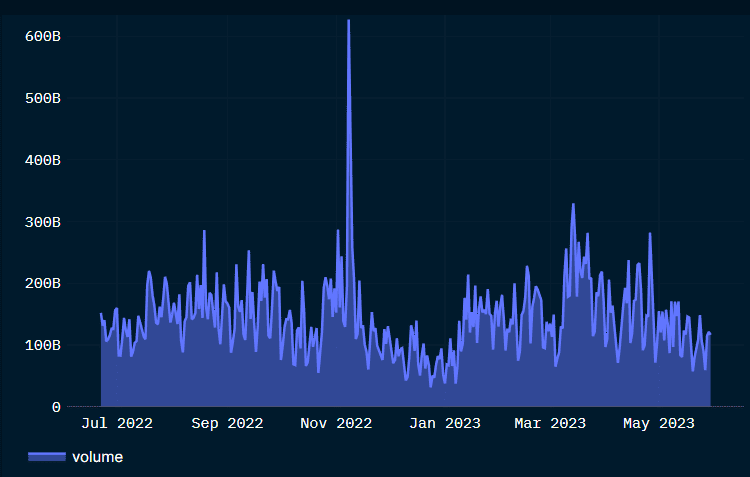The Post-FTX Effect: Bybit, Kraken, and Bitget With Growing Trading Volumes (Nansen)
One of the most calamitous events in the crypto world last year – the demise of FTX – negatively impacted the entire industry. It undermined the trust in centralized exchanges, causing numerous investors to back off them and shift towards self-custody or to sell their stash.
The collapse also prompted some platforms to take additional measures and up their game on the security field. According to data provided by the blockchain analytics firm – Nansen – exchanges like Bybit, Kraken, and Bitget have overcome the FTX shock and boosted their trading volumes during the first half of 2023.
The Winners From the FTX Meltdown
In-depth Nansen analysis estimated that the FTX crash in November 2022 changed the CEX landscape, with many exchanges experiencing record outflows and diminished interest from investors towards the end of 2022 and the start of 2023.
Some of the biggest losers seem to be Bitfinex, Kucoin, Gate.io, and OKX. The average monthly spot trading volume of Bitfinex six months before the fallout was over $12 billion, compared to $5 billion half a year later.
On the other hand, Kraken boosted its spot trading volume by approximately 14%, whereas Bybit recorded a 7% increase.
“Most exchanges took a hit on their spot trading volumes, with Bybit and Kraken notable exceptions, who managed to increase their volume,” the report reads.
Although Binance was initially rumored to have a hand in the FTX implosion, the world’s largest cryptocurrency platform remained relatively unfazed. Its average monthly spot trading volume shifted from nearly $445 billion to approximately $444 billion.
Derivatives trading volume in the sector has gone through a minor decline, with a significant spike observed in November last year (by the time of the collapse).

The only winner here seems to be Bitget, whose average numbers in that field six months before the catastrophe were $194 billion, compared to $204 billion in the aftermath. Bitfinex and Kucoin were once again on the losing side, marking reduced levels of respectively 40% and 41%.
Upgrading Security Policies
While sending shock waves through the entire crypto industry, the demise of FTX caused some exchanges to advance their investor protection programs.
Binance increased its Secure Asset Fund for Users (SAFU) to $1 billion, asserting the assets will be only used in case of an adverse event. Bitget raised its protection fund from $200 million to $300 million. Coinbase, Huobi, and OKX were among the others to take similar measures.
Multiple marketplaces have also released proof-of-reserves to show they have sufficient funds to back customer deposits, including Binance, Crypto.com, Kraken, Bybit, and OKX.
According to Nansen, such moves are vital and should become “the minimum standard in the exchange industry.”
The post The Post-FTX Effect: Bybit, Kraken, and Bitget With Growing Trading Volumes (Nansen) appeared first on CryptoPotato.









